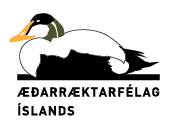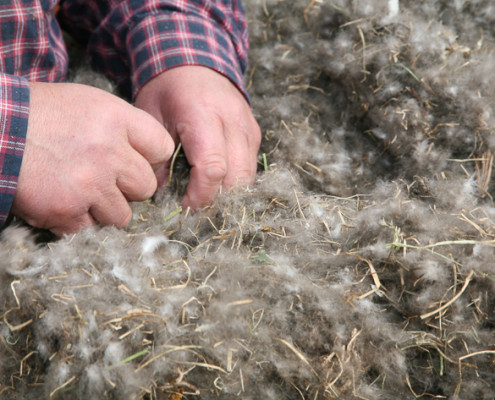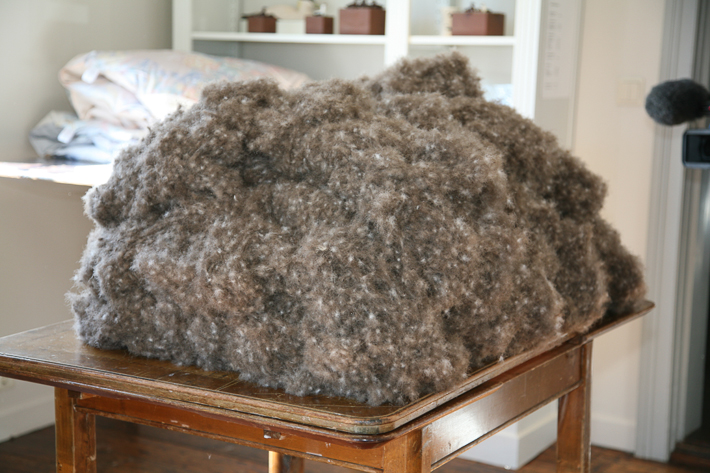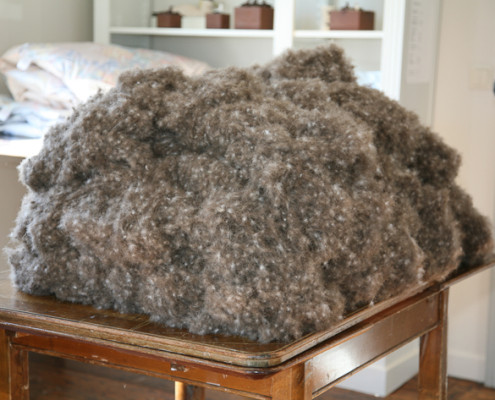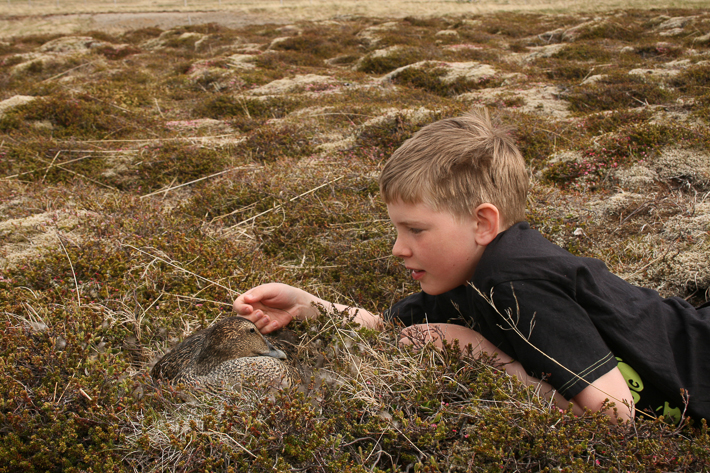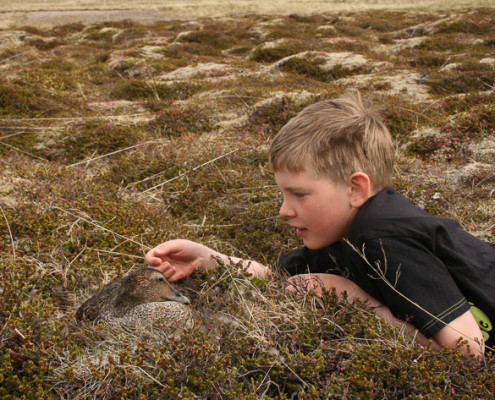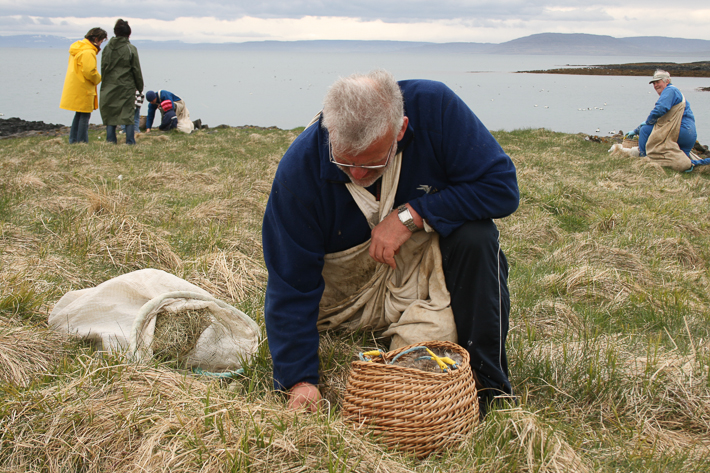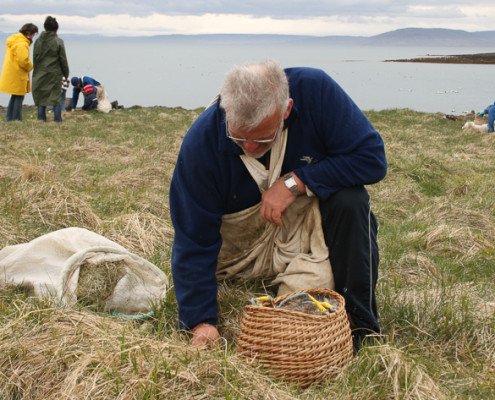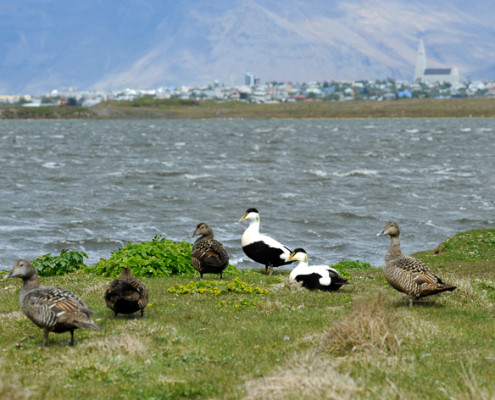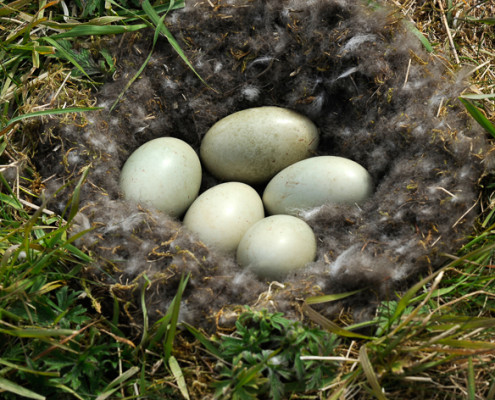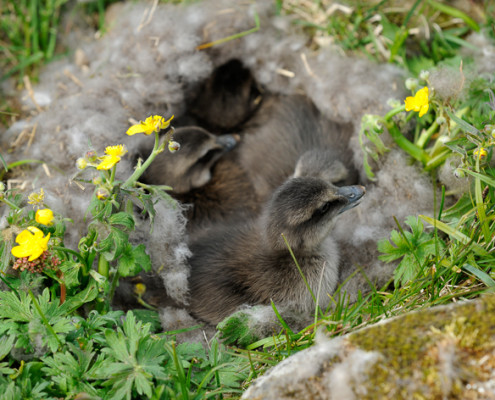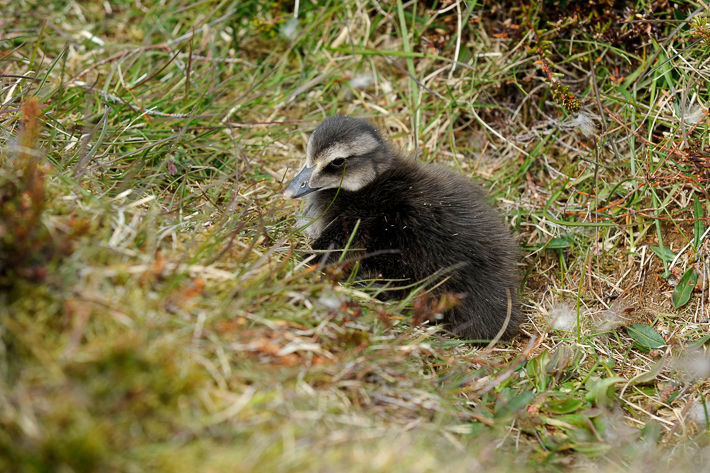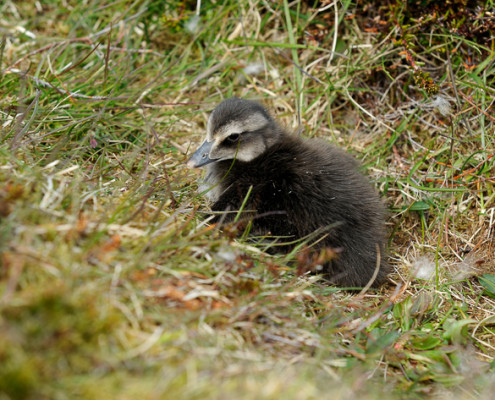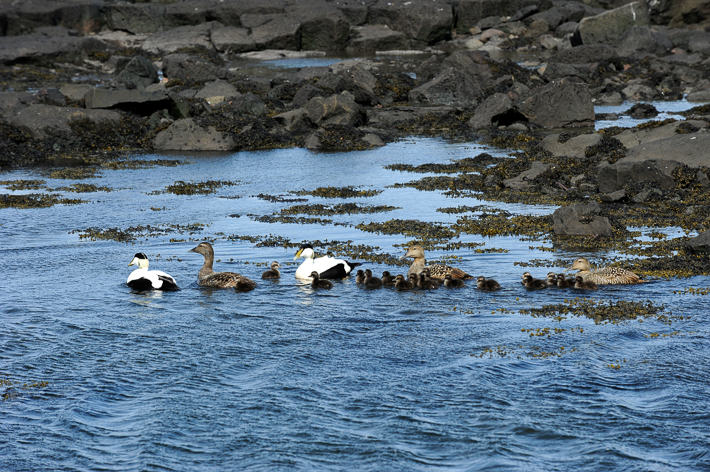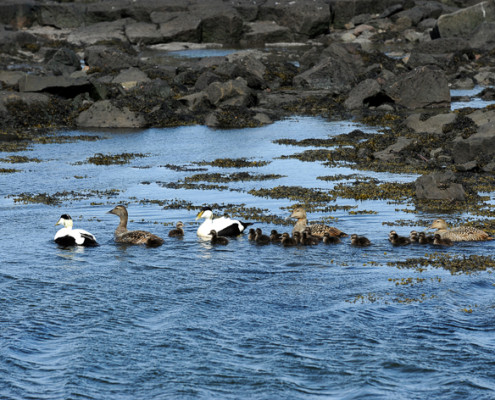Iceland and the Eider, Two Old Friends
The history of eiderdown harvesting is closely linked to Iceland’s history. Eider ducks have co-existed with Icelanders since the 9th century when the island was settled. In 1847, the eider became a fully protected species. The use of eiderdown and the culture of eider farming are rich with tradition.
Today, researchers continue studying eider ducks.
Nature’s Quilt
Eiderdown is a rare luxury, 100% natural and hand picked by farmers in Iceland. Down is used to create quilts and light warm clothing, famous for their softness, lightness
and warmth.
Quality Certification
Authorized quality inspectors ensure that buyers of Icelandic eiderdown always receive a high quality product. An inspector assesses the down’s cleanliness, smell, color and cohesion and then confirms its weight. According to law, only eiderdown that has passed this strict quality control may be sold in Iceland or worldwide.
A Unique Natural Product
Sleeping with an eiderdown quilt is a warm, light, cozy experience. Down holds a significant volume of air, thus making it very light with great insulation.
Eiderdown has small, unique, hook-like threads that lock it together, providing the insulation’s air pockets.
Icelandic eider farmers take great pride in the manufacture of their eiderdown goods. Custom-made quilts are available. The size and amount of filling can be adjusted to suit everyone from infants to adults. Also made from Icelandic eiderdown are baby carriage warmers, designer clothing, and souvenir samples of Iceland.
Approximately 3,000 kg of Icelandic eiderdown is produced every year.
The supply is dependent on weather conditions each year. It takes 60-80 nests to produce one kilogram of down.
Cleaning with Care
Cleaning of eiderdown is a meticulous process and demands a lot of care. Down is dried immediately after it is gathered and then heated to 120°C in order to disinfect it. Then it’s mechanically cleaned, in machines specially developed for this purpose.
Finally it undergoes further checks in which the last feathers and knots are removed by hand.
No chemicals are used in the process. Also, many farmers offer eiderdown which has been washed with specifically chosen detergents.
The mechanical cleaning of eiderdown is based on the ideas and methods of our forefathers. The craft of cleaning down requires precision, patience and knowledge. The mechanical process enhances the down’s quality and use.
From Their Nest to Yours
The Icelandic eider duck is a local species that lives along the country’s coast.
Eider farming and down collection is based on centuries-old traditions. Farmers provide wild eiders protection from predators, patrolling colonies day-and-night during nesting season.
A unique relationship has developed between farmers and eiders. They trust each other.
In spring the farmers prepare for the arrival of the eider. They clean the nesting area. To encourage the bird’s return, farmers often use radios and colorful items.
At nesting time the female eider sheds the down from her breast. This exposes her body warmth to the eggs while nesting. When it’s safe for the eiders, farmers carefully collect the down.
When an adult eider is two to three years old it begins nesting. It usually returns to the area where it hatched to start a nest of its own.
